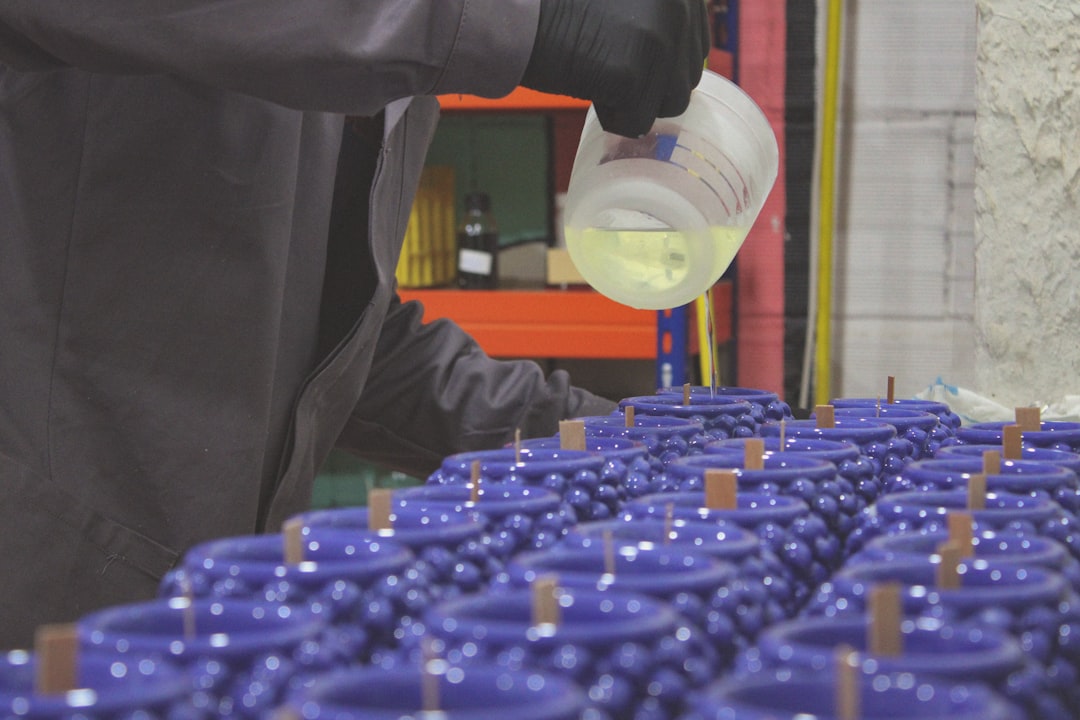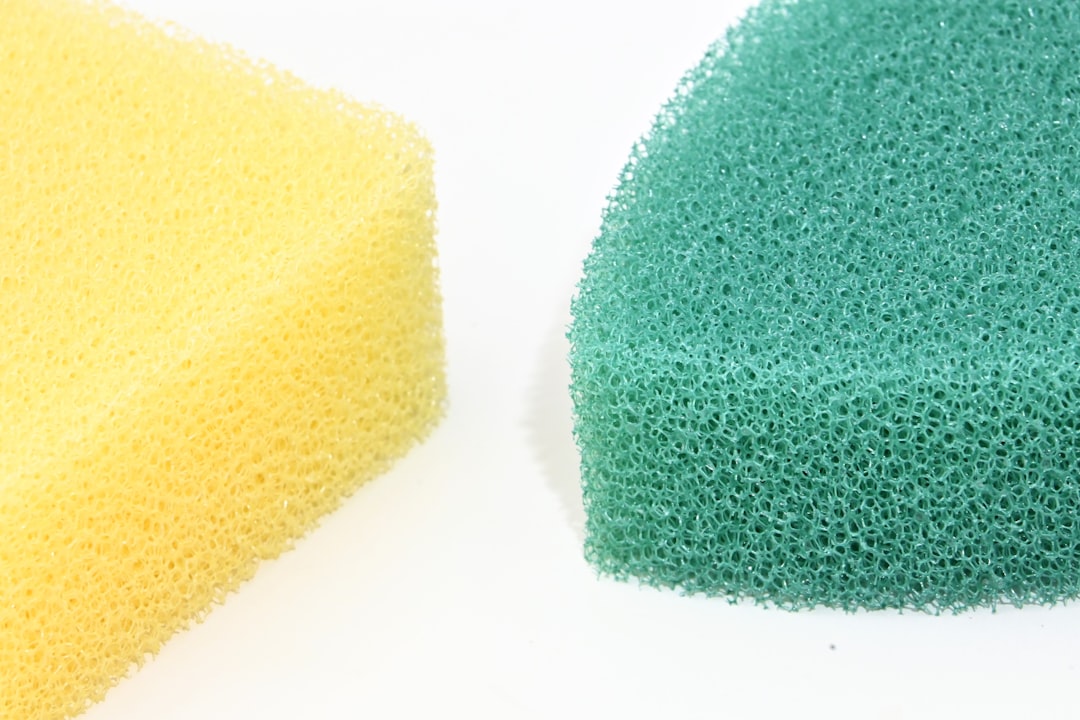

Engage prospects with a scan and streamline customer engagement with FREE QR code marketing tools by Sona – no strings attached!
Create a Free QR CodeFree consultation

No commitment

Engage prospects with a scan and streamline customer engagement with FREE QR code marketing tools by Sona – no strings attached!
Create a Free QR CodeFree consultation

No commitment
Modern cleaning compound manufacturers face mounting pressure to deliver operational efficiency and transparency in a sector where safety, regulatory compliance, and trust are paramount. Complex supply chains and ever-shifting compliance requirements mean each customer touchpoint, from packaging to sales interactions, represents not just an opportunity but a risk if information is not timely and accessible. For many, the persistence of manual, analog processes, reliance on physical datasheets, outdated binders, and paper forms, contributes to missed opportunities, especially when critical buyer intent and engagement signals slip through the cracks.
The emergence of QR codes enables cleaning compound businesses to bypass these traditional bottlenecks by seamlessly connecting offline assets to dynamic digital resources. Modern tools like Sona QR now allow sales teams to instantly share certifications or up-to-date safety data sheets directly at the point of use, while marketers can build more responsive engagement and lead capture workflows without dependency on cumbersome paperwork or after-the-fact data entry.
This guide explores how strategically implemented QR codes are empowering cleaning chemical suppliers, commercial cleaning solution providers, and eco-friendly manufacturers to navigate compliance, uncover hidden growth prospects, and foster accountability, all while building direct bridges from product usage to actionable insights and measurable outcomes.

QR codes have become the connective tissue closing the divide between a product’s physical journey and the digital information today's buyers demand. Cleaning compound manufacturers frequently struggle with outdated documentation on packaging or missed high-value prospects simply because potential leads interact with untracked materials and never make it into the CRM, resulting in lost follow-up and inconsistent experiences.
Replacing analog touchpoints with QR-enabled experiences reduces friction and increases visibility. Paper SDS binders, static brochures in shipping crates, and manual sign-up sheets at trade shows all limit access and lose data. With QR codes, every canister, tote, and delivery slip can become a live entry point to the most current document or action, with the added benefit of accurate attribution and downstream analytics.
Modern platforms like Sona QR automate CRM enrichment with each scan, surfacing account-level intelligence and timely engagement data that would otherwise remain invisible. These capabilities enable sales and marketing teams to trigger relevant nurture journeys or high-priority outreach based on real-time buyer activity, reducing the window of opportunity for competitors and raising the odds of conversion.
The shift from analog to digital touchpoints through QR codes eliminates missed segmentation opportunities and allows for automated audience tagging. When interest is strongest, teams can route scanners to the right resource and follow up with context, improving experiences and outcomes for everyone from facility managers to EHS leaders.

In industrial cleaning supply, where strict documentation and quick turnaround are essential, multiple pain points can hamper efficiency and customer experience. Paper-heavy processes and static labels create operational lag, while the lack of direct digital entry points slows both buyers and support teams. QR codes address these limitations by giving every surface and artifact a smart, measurable link to the latest information.
Offering the right information at the right time has direct compliance and revenue impact. A scan that delivers a current SDS or a one-tap reorder form can prevent accidents, reduce audit exceptions, and shorten replenishment cycles. When every scan is logged and analyzed, manufacturers unlock a richer picture of demand patterns and product usage, enabling smarter production planning and more personalized account management.
Proper deployment of QR codes throughout high-traffic and compliance-driven touchpoints empowers cleaning compound manufacturers to transform every physical asset into a real-time, actionable data source. That data fuels better training, faster customer support, clearer sales prioritization, and measurable performance gains across the business.
Selecting the right QR format is essential for serving your audience and solving industry-specific challenges. In cleaning chemical environments, clarity, speed, and auditability are crucial, so choose formats that map cleanly to intent and generate the data you need for continuous improvement.
While static QR codes have a place for evergreen assets, dynamic codes are often the better choice. They let you change destinations without reprinting, log analytics, and integrate with your CRM. For assets that must always reflect the latest information, like SDS or technical bulletins, dynamic QR is a must.
Dynamic QR codes are especially valuable for documentation that requires frequent updates or regulatory alignment. By making digital assets available at the moment of need, manufacturers reduce compliance risk and establish a reliable source of truth that auditors and customers trust.

Many cleaning compound suppliers miss high-value engagement simply because they do not capitalize on all the places buyers interact physically with their brand. QR codes bridge this gap by converting passive materials into measurable touchpoints that capture intent and route users to helpful actions.
The goal is to make scanning the most intuitive and rewarding path. Place QR codes where users already look for answers, offer clear benefit-driven calls to action, and keep the landing experience fast and relevant. Over time, the scan data reveals which channels and placements drive meaningful outcomes.
This multi-channel approach closes the visibility gap into potential leads and converts each interaction into actionable, segmented data for future retargeting. Over time, it produces a sustainable growth loop: better data informs better placements, which drive better outcomes.

The most effective QR programs focus on high-impact, repeatable workflows where speed, accuracy, and traceability matter. For cleaning manufacturers, three use cases consistently show measurable value across sales, service, and compliance.
A practical strategy is to start small with one or two use cases, validate performance, then scale across product lines and regions. Each expansion adds more data, which improves segmentation and ROI.
Each use case can be enriched with conditional logic. For example, if a scanner is outside your key markets, route to a distributor locator. If a returning customer scans an SDS more than three times in a month, trigger proactive outreach from customer success to confirm proper usage and check for training needs.
Each QR code scan is a signal that carries context and intent. When you deploy unique codes across the journey, your system can infer where the buyer is in the funnel, who they are likely to be, and what they need next. This becomes the foundation for precise retargeting, better sequences, and smart sales alerts.
Cleaning compound manufacturers serve multiple personas: facility managers, procurement officers, EHS leaders, and distributors. Segmenting by persona, action, and location produces audiences that are more likely to respond to tailored messaging, such as safety training for EHS or cost-per-use calculators for procurement.
With Sona QR, each code is a smart entry point into your funnel. The platform captures metadata automatically and makes it simple to orchestrate follow-up based on real behavior rather than assumptions, leading to higher engagement and conversion rates.
Cleaning compound manufacturers often market across a blend of traditional and digital channels. QR codes act as the connective tissue, linking print, packaging, out-of-home, and events to analytics and automation. The result is cohesive journeys that start in the physical world and continue online with context.
A strong integration plan focuses on consistency. Keep your calls to action clear and benefit-led, align the landing experience with the promise on the label, and use a central dashboard to monitor performance by channel and asset. That way, you can double down on what works and retire what does not.
With a centralized platform like Sona QR, you can manage all your codes, monitor performance across channels, and sync data with your CRM and ad platforms. This gives every team a shared view of what inspires action and where to invest next.
Building a QR program that improves compliance, accelerates sales, and clarifies attribution requires a deliberate approach. The following checklist walks through planning, deployment, and optimization so your team can move from pilot to scale with confidence.
Use these steps to align your QR strategy with business goals, assign ownership, and define the metrics that will demonstrate impact. If you already run QR programs, use the checklist to audit your current setup and identify quick wins.
Start by pinpointing the most pressing friction you can solve quickly. For many manufacturers, the first win is replacing static SDS binders with dynamic QR codes on packaging. Others begin with reorder automation to eliminate stockouts and reduce phone and email volume. Select one use case where success is easy to measure and the stakeholders are ready to adopt.
Define the outcome and who benefits. For example, if your priority is audit-ready compliance, your primary metric might be a reduction in support tickets for SDS requests or a faster audit cycle time. If your focus is demand capture at events, your metric might be the number of qualified scans per hour at your booth and the conversion rate to post-event meetings.
Choose dynamic QR for anything that needs updates, tracking, or CRM integration. Dynamic codes allow you to swap destinations when regulations change, translate pages by market, and attribute scans to campaigns. Use static QR for truly evergreen assets such as a stable safety video or a corporate sustainability statement.
Match the format to the action. A web link is ideal for SDS, while a form is best for registrations or incident reporting. For quick support, SMS or email links with pre-filled text accelerate response. If your team uses a training app, an app download QR can steer users to the correct store based on device.
Design your codes to stand out visually without compromising scannability. Add a clear frame, your logo, and a short, benefit-driven call to action such as Scan for latest SDS or Scan to reorder in 10 seconds. Keep sufficient contrast between the code and background, and ensure adequate quiet space around the code.
Test rigorously in real conditions. Verify scans from multiple devices, camera qualities, and angles, especially in low light or on curved surfaces like drums. If codes will be exposed to harsh environments, test durability and consider protective laminates or laser etching. Validate that the landing pages load fast on mobile and are accessible in poor connectivity areas.
Deploy codes where they will be most useful and most likely to be scanned. For compliance and operations, prioritize primary containers, secondary labels, mixing stations, and safety boards. For revenue capture, focus on delivery slips, catalogs, event signage, and direct mail.
Give each placement a unique code so you can track performance by channel. For example, use distinct codes for tradeshow banners, sample bottles, and sales one-pagers. This separation reveals which assets drive engagement and where to reallocate budget or make creative improvements.
Monitor scans, time of day, location, and device to identify usage patterns. Layer in downstream actions such as form fills, document downloads, and reorders to track conversion. Establish baseline metrics for each placement, then A/B test calls to action, landing copy, and page structure to lift results.
Integrate with your CRM so scan activity enriches contact and account records. Use thresholds to trigger alerts for sales or customer success, such as repeated SDS scans from a single facility that might indicate training needs. With Sona QR, you can automate these workflows, visualize performance by asset and segment, and iterate continuously.

Visibility into anonymous or offline buyer activity has long eluded cleaning compound manufacturers, impairing their ability to follow up or optimize spend. QR code analytics provide an actionable answer by tying physical interactions to digital behavior in a way that is measurable and repeatable.
Treat each scan as the first step in a data trail. When properly set up, the lineage continues through the landing experience, form submissions, support tickets, and orders. Over time, the data shows which placements and messages contribute to pipeline and where the gaps in your buyer journey reside.
With Sona QR, teams can view performance at the code, campaign, and account levels while Sona.com connects anonymous scans to known buyers using identity resolution. Together they enable multi-touch attribution across QR scans, website visits, email engagement, and CRM activities, building a complete picture from first touch to revenue.
Expanding your QR program is an exercise in evidence-based scaling. Use the insights from your early deployments to prioritize new placements, optimize copy, and standardize reporting. Over time, the practice will shift from isolated experiments to a core operating habit across marketing, sales, and operations.
Focus on the fundamentals that keep data clean and experiences smooth. Unique codes, consistent tagging, and automated workflows ensure your team spends time acting on insights rather than manually stitching data together.
You can Start creating QR codes for free with Sona QR, then scale confidently as you standardize use cases and expand across product lines.
Innovators across the cleaning sector are using QR codes to simplify compliance, accelerate sales cycles, and convert analog assets into always-on digital channels. The examples below illustrate how different placements and calls to action can shape outcomes.
Use these as starting points and adapt for your products and markets. The common threads include dynamic destinations, tight integration with CRM, and clear measurement of outcomes from scan to conversion.
These use cases can be expanded further with conditional routing, such as sending first-time scanners to training while routing repeat scanners to quick actions like reorder or chat with technical support.
Experience shows that the best results come from thoughtful placement, relevant content, and a commitment to ongoing optimization. Teams that treat QR codes as strategic entry points rather than decorative add-ons consistently outperform their peers.
Avoid the common pitfalls of vague calls to action, outdated destinations, and one-size-fits-all landing pages. Each code should promise a clear benefit and deliver an experience tailored to the physical context and the likely persona scanning it.
QR codes have emerged as a strategic bridge for cleaning compound manufacturers seeking to modernize how information flows from the factory floor to the end user. By minimizing analog friction, surfacing hidden engagement signals, and enabling instant access to compliance-critical assets, manufacturers can begin to view every product interaction as a measurable step in the buyer’s digital journey.
Whether your focus is on reducing missed opportunities from untracked prospects, streamlining the speed of regulatory support, or dynamically segmenting high-fit accounts for personalized follow-up, a thoughtful QR code strategy supported by flexible, real-time data platforms is becoming a true differentiator in the cleaning compound industry. The right approach transforms physical assets into digital channels, closes the gap between customer intent and actionable data, and shifts organizations toward resilient, insight-driven operations.
Now is the time to evaluate your physical and digital touchpoints, identify offline-to-online conversion gaps, and experiment with QR-powered workflows that bring transparency, compliance, and measurable revenue gains to every facet of your cleaning compound business. With Sona QR for code generation, tracking, and CRM integration, and Sona.com for attribution and buyer journey analytics, you can connect scans to revenue and scale what works faster than ever.
QR codes have revolutionized the cleaning compound manufacturing industry by transforming traditional product interactions into dynamic, measurable engagement opportunities. From enhancing customer acquisition to delivering seamless, informative experiences, QR codes enable manufacturers to provide instant access to product details, safety data, and usage instructions—all while capturing valuable data to optimize marketing efforts and customer satisfaction.
Imagine instantly knowing which products attract the most interest and being able to update your campaigns on the fly, without costly reprints. With Sona QR, you can create dynamic, trackable QR codes tailored to your cleaning compounds, linking every scan directly to actionable insights and revenue growth. No missed leads, no guesswork—just smarter, more impactful connections with your customers.
Start for free with Sona QR today and turn every product interaction into a powerful driver of growth and loyalty in your cleaning compound business.
They struggle with outdated analog processes like physical datasheets and paper forms that cause missed opportunities, compliance risks, and slow buyer engagement.
QR codes connect physical products and assets to dynamic digital resources, providing instant access to up-to-date safety data sheets, certifications, and workflows, reducing friction and regulatory risk.
Common uses include instant access to SDS, digital product registration, and automated order replenishment through QR codes on packaging, delivery slips, and labels.
They use dynamic QR codes on containers and packaging to deliver the latest safety data sheets and certifications, reducing audit exceptions and ensuring users access current compliance documents.
QR codes reduce the need for costly and wasteful reprinting of paper materials by enabling digital updates, which lowers paper usage and minimizes environmental impact.
QR codes provide granular analytics on scans, including time, location, and user behavior, which enrich CRM data and reveal buyer intent for targeted marketing and sales follow-up.
Dynamic QR codes are preferred for frequently updated content like SDS and compliance documents, while static QR codes suit evergreen assets such as corporate videos or sustainability statements.
They digitize workflows such as onboarding and incident reporting, automate data capture, reduce manual errors, and enable faster reordering and compliance verification.
Effective placements include product packaging and labels, delivery receipts, trade show booths, facility posters, direct mail, and safety signage to capture engagement at key touchpoints.
Using unique QR codes for different funnel stages, tagging scans by use case and location, and syncing data with CRM and ad platforms enables precise segmentation and personalized retargeting.
QR codes link to dynamic digital content that can be updated instantly to reflect new regulations or formulations, ensuring users always access the latest compliance information.
Avoid vague calls to action, outdated destinations, one-size-fits-all landing pages, poor placement, and lack of ongoing performance audits to maintain engagement and compliance.
By tracking scan data, downstream actions like SDS downloads and reorder submissions, enriching CRM records, and monitoring conversion rates and engagement metrics.
The integration of dynamic QR codes with CRM systems and analytics platforms enables real-time data capture, automated nurture journeys, and multi-touch attribution across offline and online interactions.
Begin with a clear use case such as replacing static SDS binders with dynamic QR codes, select appropriate code types, design and test for usability, deploy across relevant channels, and continuously track and optimize.
Use Sona QR's trackable codes to improve customer acquisition and engagement today.
Create Your FREE Trackable QR Code in SecondsJoin results-focused teams combining Sona Platform automation with advanced Google Ads strategies to scale lead generation

Connect your existing CRM

Free Account Enrichment

No setup fees
No commitment required

Free consultation

Get a custom Google Ads roadmap for your business






Launch campaigns that generate qualified leads in 30 days or less.
